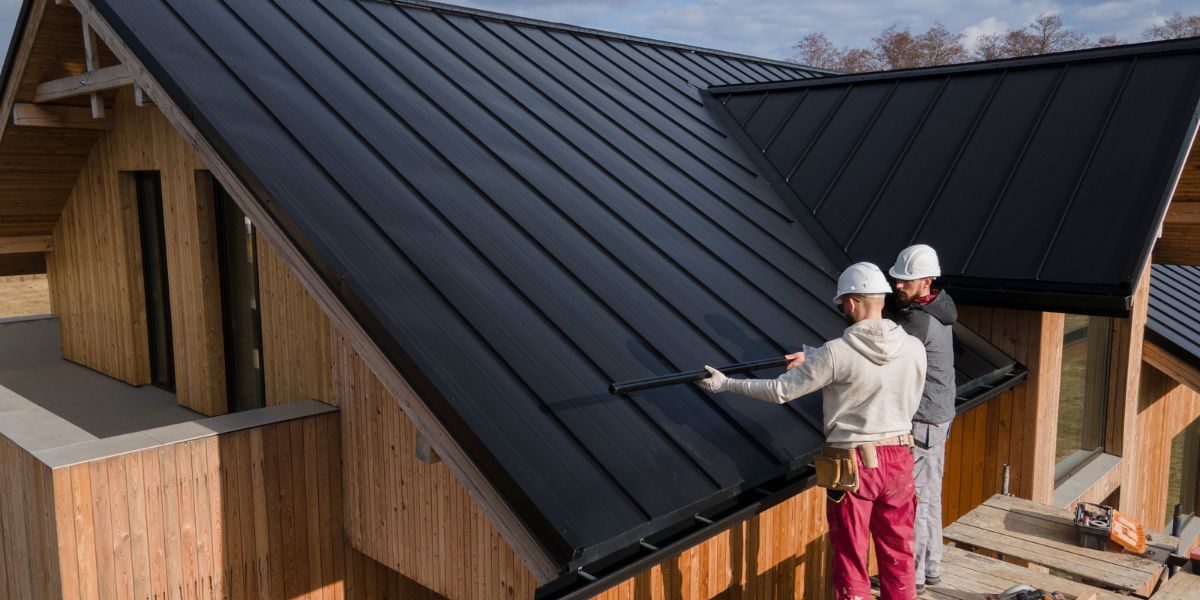Roof Maintenance isn’t just a seasonal chore it’s a year-round responsibility that protects the largest investment you likely own: your home. As someone who’s been through multiple storm seasons and watched neighbors scramble for last-minute repairs, I can confidently say that staying ahead with simple roof care can save you thousands in repairs.
With 2025 bringing more unpredictable weather patterns, from extreme heatwaves to intense downpours, proactive Roof Maintenance is more crucial than ever. Studies show that minor issues, when ignored, often escalate into costly repairs within a year. This is especially true in regions with varying climates, where roofs experience both sun damage and water-related wear.
Let me walk you through some proven, homeowner-friendly steps that will keep your roof performing at its best.
Why Roof Maintenance is Crucial in 2025
Over the past few years, I’ve noticed how climate trends have drastically influenced building materials and maintenance cycles. Whether it’s solar radiation in summer or high winds in winter, your roof takes the brunt of environmental changes.
- Insurance companies now recommend semi-annual roof checks, as neglect can void certain policy protections.
- Roof-related claims made up 40% of all home insurance filings in 2024.
- Homeowners who invest in DIY Roof Maintenance reported 60% fewer emergency repairs, based on a HomeAdvisor survey.
When you think of your roof as the first line of defense, maintaining it no longer feels optional it becomes essential.
Roof Maintenance Tips You Can Do Yourself
Taking care of your roof doesn’t always require a professional. In fact, most of the vital tasks are simple and cost-effective. Here’s what I personally check every season.
1. Start with a Visual Inspection
Every few months especially after a storm I walk around my home with binoculars and look for:
- Missing or curled shingles
- Debris buildup, especially in valleys
- Signs of rust or moss growth
- Sagging areas along the roofline
These inspections only take 15 minutes but can reveal early warning signs of bigger issues.
2. Clean Gutters and Downspouts
One of the simplest but most overlooked parts of Roof Maintenance is cleaning the gutters.
- Blocked gutters cause water to pool, leading to leaks and mold.
- Use gloves, a scoop, and a hose to flush debris.
- Inspect joints and fasteners while cleaning.
I usually do this at the end of fall and again before spring rains.
3. Trim Overhanging Branches
Trees may add curb appeal, but they’re a hazard to your roofing system.
- Falling branches can crack shingles or damage flashing.
- Overhanging limbs drop leaves that clog drainage.
- Squirrels and birds often use nearby trees to access the roof.
I recommend keeping branches at least six feet away from your roofline.
4. Inspect Flashing and Seals
If you’ve ever had a leak near a vent or skylight, you know how critical proper flashing is.
- Flashing is the thin metal that seals joints and transitions.
- Use a sealant to re-caulk loose areas around chimneys or vents.
- Check for signs of corrosion or gaps in older seals.
I check these areas closely during every roof inspection.
5. Check Attic Ventilation
What happens inside your attic directly impacts your roof’s health.
- Poor ventilation leads to heat and moisture buildup.
- This causes premature shingle aging and encourages mold.
- Ensure that soffit and ridge vents are unobstructed.
Adding a solar-powered fan to my attic significantly lowered my cooling costs and improved roof longevity.
When to Call the Pros: Roofing Specialists Sydney
While DIY is great for routine care, there are moments when it’s wise to bring in experts. When I noticed a dip in my roofline and signs of water damage inside, I reached out to roofing specialists sydney. Their team used infrared tech to detect hidden leaks and replaced compromised sections without a full re-roof.
The value they added went beyond just repairs they educated me on proper water flow and ventilation solutions tailored to Sydney’s unique weather patterns.
Trust me, getting expert insight early can save you from more costly structural damage.
Seasonal Roof Maintenance Checklist
Here’s a breakdown of what I include in my seasonal roof upkeep, tailored for Australia’s climate but useful for most homeowners:
Spring
- Inspect for winter damage
- Clean out gutters and downspouts
- Re-seal around vents and flashing
Summer
- Check attic ventilation and insulation
- Trim back overhanging trees
- Look for signs of UV damage on shingles
Fall
- Remove fallen leaves from valleys and gutters
- Ensure downpipes are flowing freely
- Prep roof for rainy season
Winter
- Check for ice dams or pooling water
- Inspect interior ceiling for leak stains
- Confirm flashing is still sealed tight
Keeping up with this schedule has helped extend my roof’s life and boosted my home’s resale value.
DIY Tools Every Homeowner Should Have
Investing in a few tools can make Roof Maintenance much easier:
- Telescopic ladder: Safe access to the roof without needing scaffolding
- Roof rake: Especially useful in winter for snow removal
- Sealant and caulking gun: Ideal for patching minor leaks
- Flashlight: For thorough attic inspections
- Binoculars: For ground-level inspections of the roof
These tools cost less than a single repair and empower you to handle most tasks independently.
Final Thoughts on Roof Maintenance
As we move further into 2025, Roof Maintenance is no longer just about cleaning gutters or replacing shingles. It’s about adopting a proactive mindset. Regular upkeep not only protects your family and belongings but also enhances energy efficiency and resale value.
From my own experience, the small tasks you do today will save you from large expenses tomorrow. Keep a checklist, stay alert after storms, and when in doubt, don’t hesitate to call professionals like the trusted roofing specialists sydney I worked with. Your roof is your home’s shield treat it that way.
